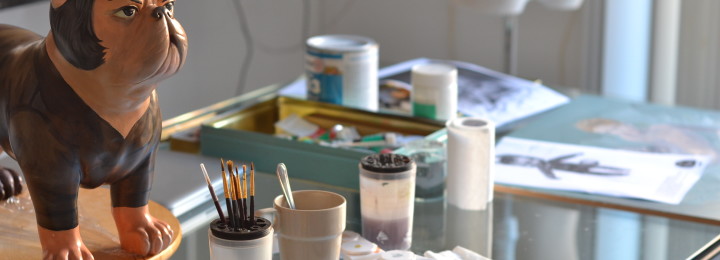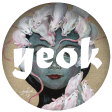How to Take Your Artwork to the Next Level
How to Take Your Artwork to the Next Level

I was so glad when Anna email me this morning with her question – the more people are getting serious with their art, the stronger the community will be! I’m no expert, but I can tell you everything I know from experience, and wanted to share what with you what I did with her.
Hello, my name is Anna, I am 38 years old and I am thinking about taking art to the next level . . . Meaning I wish to expand on my skills. I have been looking for a program that helps artists to expand on their skills and assists with exhibiting work, or something that involves mentoring. So far I can not find anything. Programs generally involve social services or beginners who wish to learn the skills as a hobby. I am interested in fine arts, acrylics and oil paints. Any suggestions of where I can look, go would be greatly appreciated.
Warm Regards,
Anna
Let’s break it down to following sections:
Expand artwork skills
Artists are always looking for ways to improve themselves. You might have seen some great art around, got really inspired from it and wondered how you can get to making work like that. There are few different places you can look for opportunities for self improvement:
- Online videos - This is probably the fastest and cheapest resource you can find. There are plenty free youtube videos made from different artists, and I just found this awesome site the other day packed with high quality video tutorials.
- Life drawing/painting – If you are in Melbourne, you are in luck! Nothing is better than having a real human in front of you when it comes to studying the anatomy. No vacancy gallery does it every week and there is a funky one at Dr Sketchy every month.
- Artist Q & A – I’m yet to attend one myself but I see galleries doing it from time to time. The best way to spot one is sign up for a gallery mailing list, if you see an artist you really like, go for their opening, find out whether they do Q & A.
- Collaborate with other artists – This is probably the best thing you can do to learn some commonly ignored trick. Every artist has some tricks of their own and sharing your tricks with fellow artists is a great way to learn!
- Art workshops - There are so many workshops out there so I’m not going to list specific ones. A quick search on Google will show you what’s available in your area. They can be pricy but it’s a good way to get you started and you can even make few friends while you at it.
- Push yourself – Sometimes, few extra hours on a detail is all it takes from “Meh” to “Wow!” If you don’t like something, paint over it! Try a different colour! Always work until you are happy. Having said that, knowing when to stop is also important, so try to balance between perfection and madness!
Assistance with exhibiting work
This is not as straight forward as you think. Find a gallery is like dating. Both you and gallery have to feel comfortable for this to work. You might send a proposal to a gallery many times and they never accept it, or you might click with a gallery owner and they can’t wait to have you exhibiting:
- Visit the gallery – You’ve got to have the first date to get to know someone right? So let yourself be impressed and inspired, and when you mind tells you this is the perfect gallery for you, you know you are onto something.
- Talk to the gallery – The gallery might be impressive, but how about the people? Do you get along with them? Are they friendly? The person at the counter might not be the manager of the gallery but they should know enough information about sending in proposals and etc.
- Have a portfolio ready to show – Having all of your works in one simple place is important to set up before you approach the gallery officially. You can build the relationship early by liking and commenting on social network. But when you are asking someone to make a quick judgement of whether you are a good fit or not, impress with all available information will make their life much easier. There are free services out there where you can set up a website for free.
- Visualize your work in the space – A standard proposal might have images of your works, CV & bio, but the most important thing is to visualize your work in the space. It shows that you have put some thoughts into that particular gallery space instead of a generic proposal. It shows that you understand how many artworks are required to make it work, if you would like some extra installation, if the gallery can provide everything you need.
- Sending in the proposal by deadline – Some gallery schedule shows one year in advance so knowing the deadline and making it is very important. Generally the more established a gallery is, the longer lead time they have for proposal deadline.
- Getting feedback – Don’t be afraid to ask for feedback if you are not accepted. Always be nice and polite, and never take anything personally.
- Generally for an emerging artist, a non for profit gallery will be better for you to start with because they are more experiential for different styles and their fee are lower too. Your aim should be landing a solo show and promote it to all galleries.
- Entering competitions, art prizes and group shows will be very helpful for you to build your CV. And galleries will be more confident about your ability to fulfill a show. There are websites which have a listing of all competition, prizes and opportunities like this one.
- See also: How to find a gallery for your art (and work with them)
Oh and don’t forget to discover yourself
Being good at the technical stuff is certainly essential, but discovering yourself is the key to have a distinct style. Galleries see tons of great art everyday, so don’t be afraid to be bold and honest in your artworks!







Pingback: Yeok – Melbourne artist » How to find a gallery for your art (and work with them)